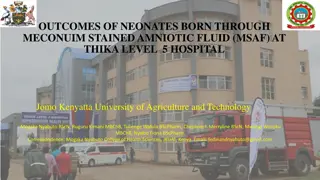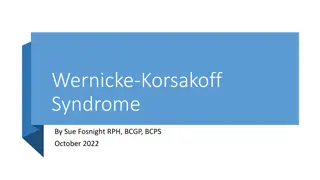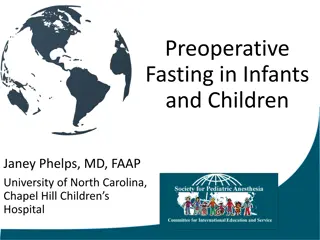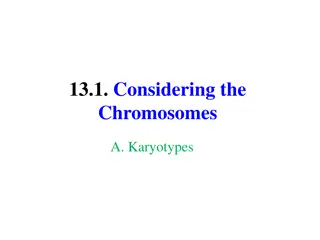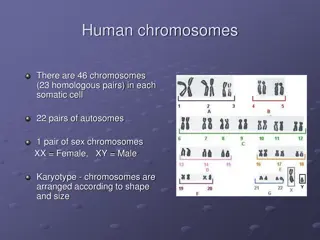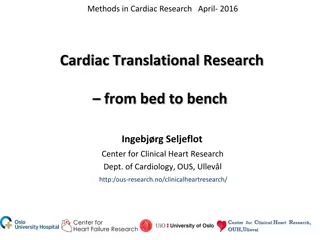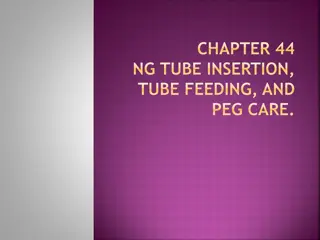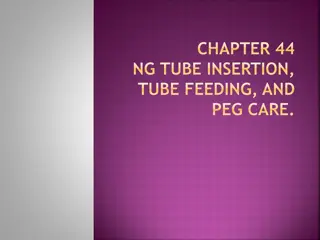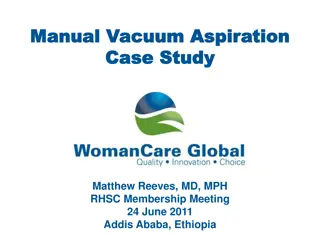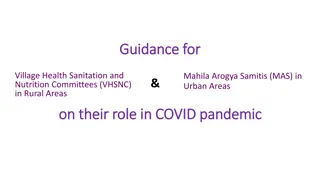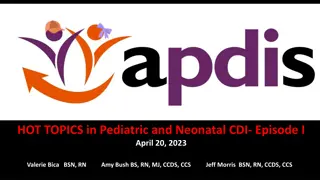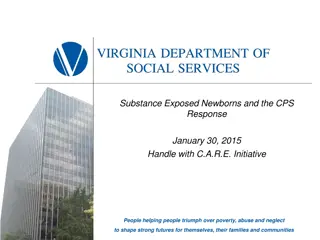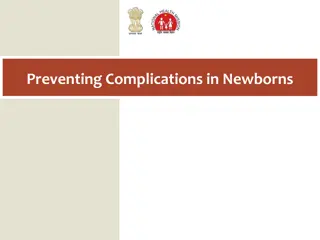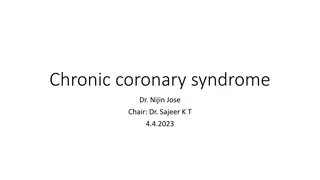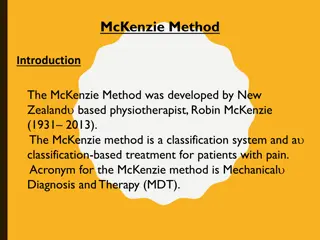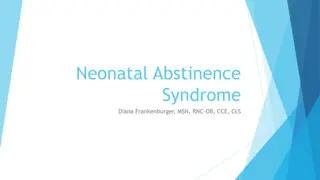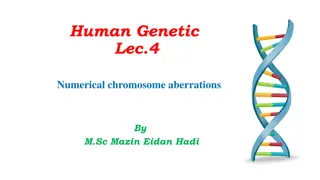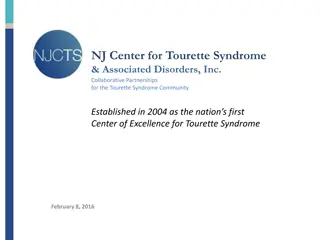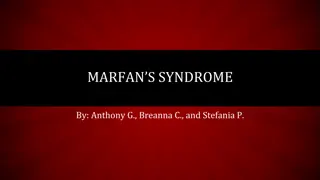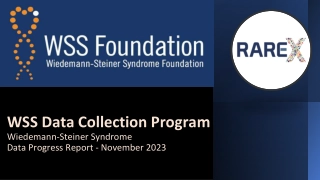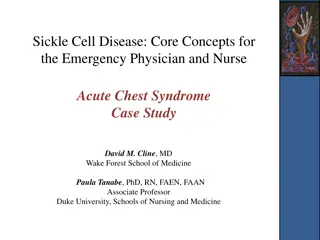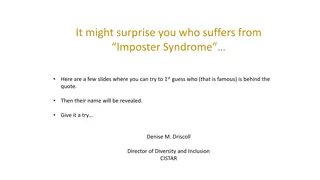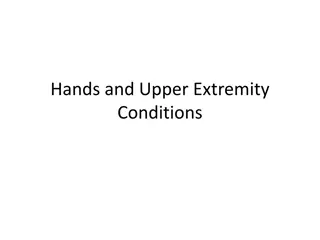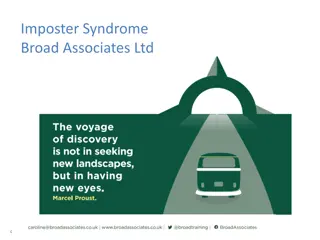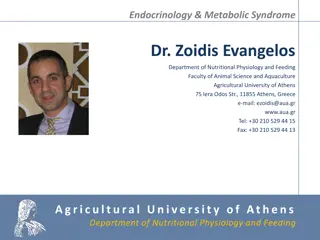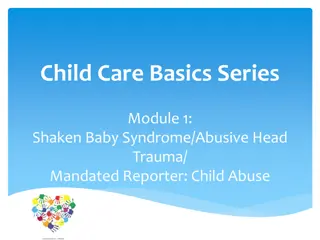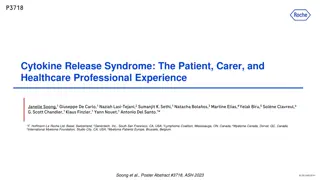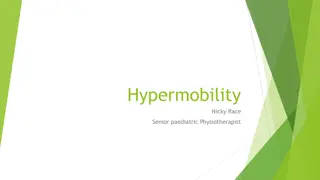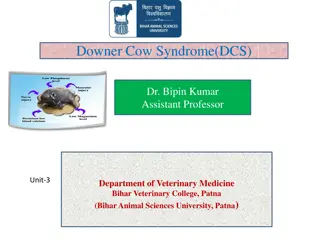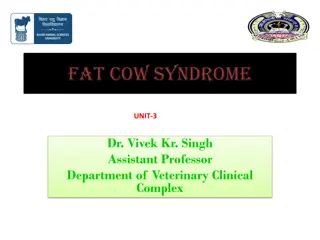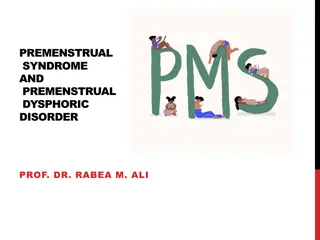Understanding Meconium Aspiration Syndrome (MAS) in Newborns
Meconium Aspiration Syndrome (MAS) is a condition where a newborn aspirates meconium, the first substance discharged from the GI tract. This primarily affects term or post-term infants and can lead to airway obstruction, gas trapping, chemical pneumonitis, and PPHN. Risk factors include hypoxia and maternal health conditions. Learn about the perinatal events and post-birth complications associated with MAS.
Download Presentation

Please find below an Image/Link to download the presentation.
The content on the website is provided AS IS for your information and personal use only. It may not be sold, licensed, or shared on other websites without obtaining consent from the author. Download presentation by click this link. If you encounter any issues during the download, it is possible that the publisher has removed the file from their server.
E N D
Presentation Transcript
Meconium Aspiration Syndrome (MAS) By: Nicole Stevens
Overview Meconium is the first substance discharged from the GI tract in the perinatal period. Rarely found in amniotic fluid before 34wks gestation, likely because its passage may require neural stimulation of a mature GI tract. Meconium aspiration syndrome (MAS), where the newborn aspirates the meconium containing liquor, therefore, mainly affects term or post term newborns.
Overview In MAS, the meconium is aspirated through the trachea into the bronchial tree, and sometimes into the alveoli. Sequence of events that may follow: Obstruction of airways Gas trapping Chemical pneumonitis (possibly caused by the bile and liver enzymes in the mec) PPHN
Risk factors Hypoxia is thought to be the catalyst that leads to passage of meconium into amniotic fluid. Hypoxic episodes may be due to: Head or cord compression Maternal risk factors leading to uteroplacental insufficiency (such as, maternal HT, PE, chronic respiratory disease, chronic cardiovascular disease, maternal diabetes, post term, heavy smoking) MAS is seen most frequently in the term, post term and growth restricted infant.
Perinatal events leading to MAS Physiological passage of meconium, or a stress induced passage (hypoxic event) This meconium stained liquor can be aspirated during gasping inutero, or by aspiration after birth (in mouth/nose) Downwards in the respiratory system you can get proximal airway obstruction, peripheral airway obstruction, alveolitis and epithelial damage, then disruption of alveolo-capillary barrier
Events after birth with MAS Airway obstruction can cause air- trapping, and atelectasis, and decreased lung compliance Meconium in the lung and the increase in exudate from alveolar that it causes can inhibit surfactant production An hypoxic incident causing the passage of meconium may be ongoing, leading to perinatal asphyxia, increasing likelihood of PPHN and HIE
Main effects of MAS There are 3 main effects of MAS Chemical pnuemonitis Surfactant dysfunction Airway obstruction
Chemical pnuemonitis An inflammatory response that occurs when enzymes, bile salts, and fats in meconium irritate the airways and lung parenchyma Creates a diffuse pneumonia shortly after delivery Also creates a cascade of events that leads to vascular leakage and injury
Surfactant dysfunction Occurs when free fatty acids in the meconium strip surfactant from the alveolar surface and produce diffuse atelectasis The role of surfactant is to reduce the surface tension in the alveoli, without it the alveoli walls will collapse in and want to stick together. Surfactant has a dispersing and spreading effect (like a drop of detergent in oil)
Airway obstruction Can be partial or complete, results from the meconium being aspirated into small airways, can result in atelectasis or overdistention of the alveoli Overdistention occurs when there is gas trapping behind meconium particles (ball valve effect); causes uneven ventilation with hyperinflation in some areas and atelectasis in others Leads to ventilation/perfusion mismatch which contributes to hypoxaemia, hypercapnea and acidosis; which in turn leads to pulmonary arteriolar vasoconstriction and pulmonary hypertenison
Differential diagnosis TTN Surfactant deficiency Sepsis/pnuemonia Pneumothorax CDH Birth asphyxia with PPHN and/or haemorrhagic pulmonary oedema
Characteristics of MAS Early onset of respiratory distress and hypoxaemia Most babies with MAS will only need some oxygen therapy and general supportive care Ventilator support should be commenced if there is ongoing hypoxaemia or respiratory acidosis Local incidence is around 1.5 per 1000 births.
Clinical features of MAS Early onset of respiratory distress in a baby born through meconium stained liquor Tachypnoea, cyanosis, variable hyperinflation Auscultation reveals widespread wet inspiratory crackles, occasionally with expiratory noises suggesting ball-valve airway obstruction Blood gases: hypoxaemia and hypercarbia Radiologically: typically starts with global atelectasis in early X-rays to widespread patchy opacification accompanied by areas of hyperinflation and/or actelectasis
Management of MAS Administration of O2 is critically important, and in many neonates is all that will be needed for respiratory therapy. The target saturation range is 91 95%. The target PaO2 is 60 90mmHg. Consider CPAP if there is moderate respiratory distress and hypoxaemia Intubate if there is persistent hypoxaemia in 100% oxygen; of if there is respiratory acidosis with pH <7.20
Ventilation If requiring intubation in the birth room it is usually done without drugs If done after transfer to a nursery, preferable to sedate and muscle relax prior to intubation May require high PIPs to achieve gas exchange (30 -35cm H2O) Should be aiming for oxygenation whilst minimizing barotrauma that can lead to air leaks
Ventilation cont Most evidence favours the use of high PEEP (6-8cm H2O) and a long expiratory time Ventilation rates of 40 60 breaths/min (the lower the rate, the longer the expiratory time) Inspiratory times of 0.5 0.6 secs If gas trapping occurs, expiratory time can be increased and PEEP decreased Particularly if there is also PPHN, sedation and muscle relaxation should be maintained if the disease is severe
Ventilation cont Mode of ventilation will be case dependent; could range from conventional ventilation, to HFOV, to HFJV and in infants with severe MAS, if available, ECMO may be used. In Melbourne ECMO and HFJV only available at RCH MAS has been the leading diagnosis for neonates requiring ECMO Use has decreased with the advent of new therapies Survival rate 95%, risk of severe disability low, risk of any disability about 17% in survivors (treated with ECMO)
Surfactant therapy Current evidence not showing a consistent benefit, some babies acutely deteriorate when administered Lung lavage with surfactant is currently being investigated, but not yet able to be recommended Might be used as a supportive therapy for PPHN
Suctioning (birth room and beyond) Routine intrapartum suction not recommended anymore Newborns with depressed respiratory effort, poor muscle tone and HR <100 born through mec-liquor are recommended to have direct ET suctioning prior to stimulation Stomach contents should be evacuated, and a gastric tube should be inserted In intubated infants the large airways can be lavaged with a small amount of normal saline and suctioned PRN.
General care Cardiovascular support need IV fluids for volume/hydration, +/- inotropic support Fluid restriction Antibiotic therapy until primary bacterial infection can be excluded IV therapy (10% dextrose, then 10% dextrose with additives, then parenteral nutrition if unable to feed by 2 - 3 days) and NBM until the respiratory distress is resolving
Complications PPHN Air leak (pneumomediastinum, pneumothorax, Cystic lung disease) Pulmonary haemorrhage Complications of asphyxia (seizures, oliguria, coagulopathy, thrombocytopenia)
If there is PPHN Correct potentiating factors: hypoglycaemia, hypocalcaemia, hypomagnesaemia, polycythaemia, hypothermia, pain Increase systemic blood pressure to reduce right to left ductal shunt (by the use of volume expansion and pressor agents) Improve right ventricular function (by the use of inotropes) Use of pulmonary vasodilators (inhaled nitric)
Management Best defense is good offense Amnioinfusion??? (infusion of warmed normal saline to relieve oligohydramnios and fetal distress, and to decrease meconium staining) Birth room management. Have personnel available who have intubation capabilities; suction with size 12F catheter, or through and ET tube/mec aspirator Assessment for respiratory distress and/or hypoxia after birth and escalate care as required.
Nursing care Observations and documentation Blood taking as required Assistance with procedures as required Cluster cares to reduce handling Minimise noxious stimulus (lights, noise, voices) Parent support, education Preparation for transfer if requiring tertiary care (consider accommodation needs of parents, handover to transport nurse, paperwork for transfer) Clean up and preparation for next admission!
Interesting facts Meconium staining of the cord can appear with as little as 1 3 hours of exposure Staining of the fingers and nails occurs within 4 6 hours of exposure Staining of the vernix occurs within 12 14 hours
REFERENCES http://emedicine.medscape.com/article/ 410756-overview http://www.health.vic.gov.au/neonatalh andbook/conditions/meconium- aspiration-syndrome.htm International Journal of PediatricsVolume 2012 (2012), Respiratory Support in Meconium Aspiration Syndrome: A Practical Guide. Peter A. Dargaville


